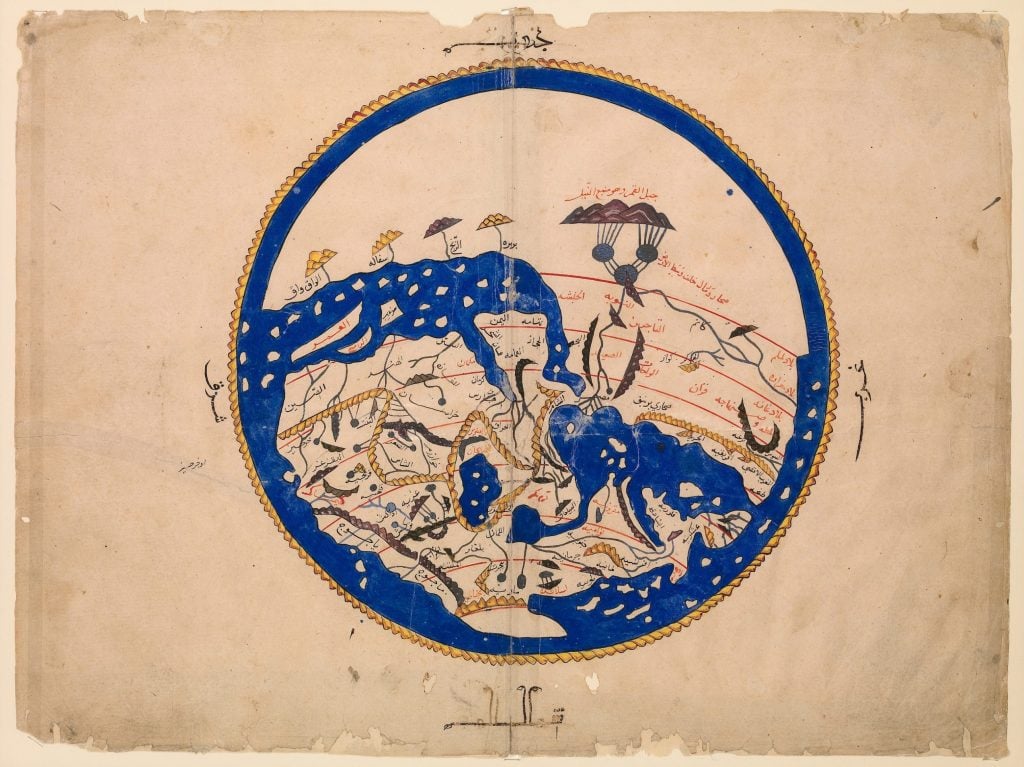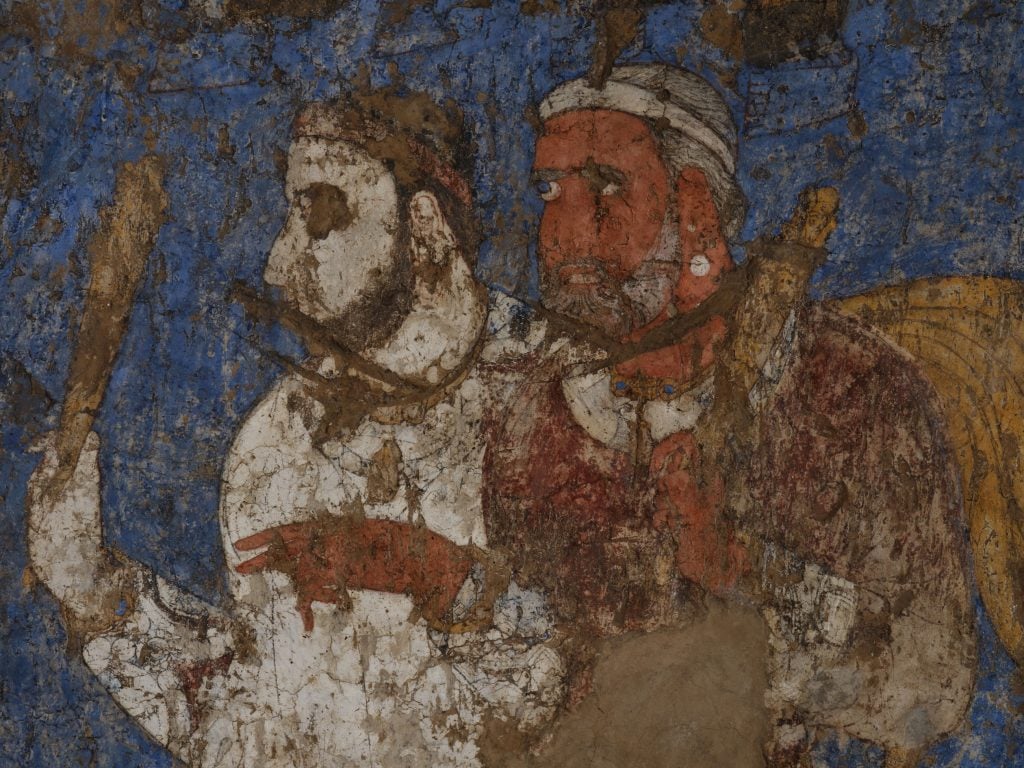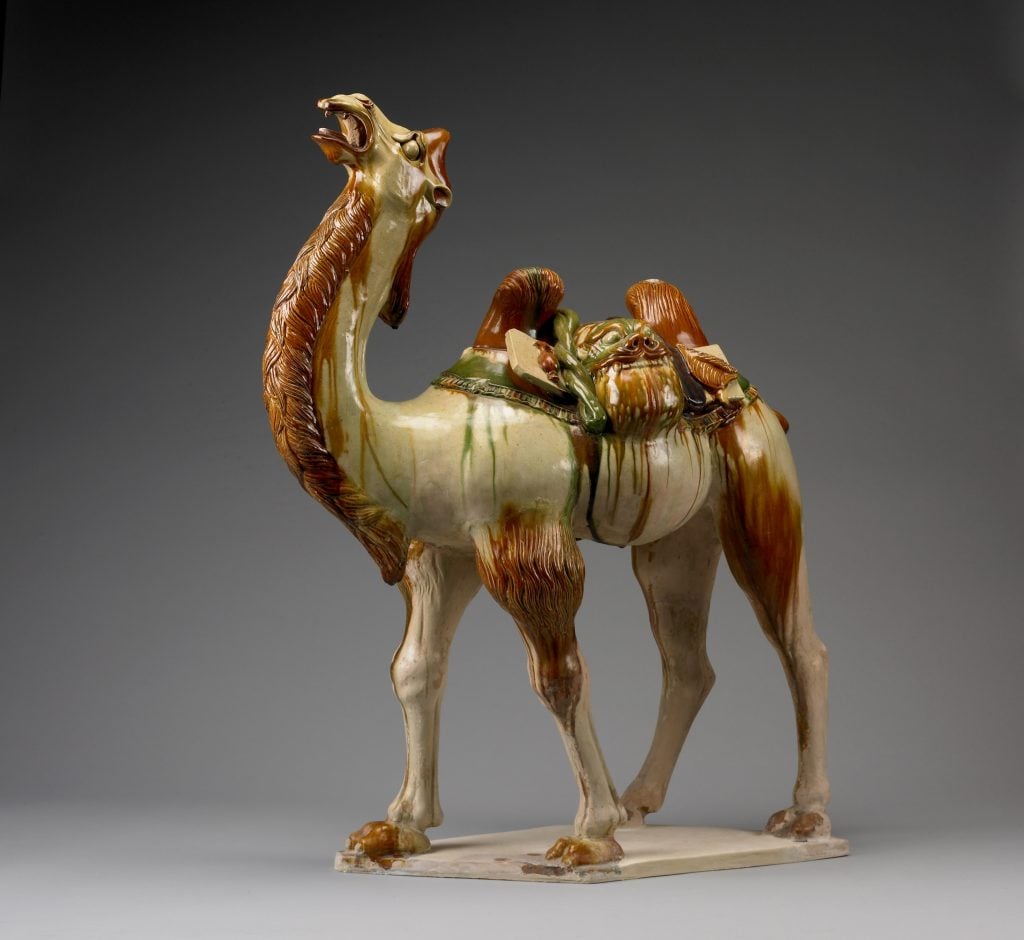Art & Exhibitions
British Museum’s Splashy New Show on the Silk Road Meets With Controversy
A much-lauded art historian argues that India gets drastically short shrift in the exhibition, which has elsewhere been met with raves.

The British Museum’s exhibition “Silk Roads,” studying the famous ancient trade route, has opened to rave reviews from critics, but one art historian is taking issue with the museum’s accounting of the globe-spanning phenomenon, laid out through some 300 objects from various lenders and the institution’s own collection.
The museum aims to “challenge and expand” traditional understandings of the Silk Road: “Rather than a single trade route, the Silk Roads were made up of overlapping networks linking communities across Asia, Africa and Europe, from Japan to Britain, Scandinavia to Madagascar,” according to press materials.
William Dalrymple, an art historian, critic, curator, and author of the new book The Golden Road: How Ancient India Transformed the World, has characterized the exhibition as misleading, saying it doesn’t broaden the concept far enough.
Scottish-born and based in India, Dalrymple has earned some serious bona fides: his new volume is his 12th published since 1989, and he has won or been shortlisted for numerous prizes along the way. In a review of his latest book, a writer for the Guardian called him “a born storyteller” and said that he “deftly” charts the country’s development while laying out how, for more than a millennium, “Indian goods, aesthetics and ideas dominated a vast ‘Indosphere.’”
Dalrymple takes issue with what he describes as a lack of any real consideration of India in the British Museum’s representation.

Wall painting from the south wall of the Hall of the Ambassadors (detail). © ACDF of Uzbekistan, Samarkand State Museum Reserve.
Dalrymple argued, in an essay on the British Museum show and another exhibition on the same subject at the British Library, that India is sorely neglected at the British Museum. What’s more, speaking at the the Henley Literary Festival on September 28, just two days after the show’s opening, Dalrymple asserted that the museum was furthering myths about the Silk Road that are rooted in the late 19th century.
As reported by the Times of London, Dalrymple noted that such myths first started to appear in 1877, when German geographer Baron Ferdinand von Richthofen coined the term Seidenstrassen, German for “Silk Roads.” The term would later appear in the title of a 1938 book by Swedish geographer and explorer Sven Hedin, The Silk Road: Ten Thousand Miles Through Central Asia, which maps the author’s 10,000-mile trek through Asia and other parts of the East.

Tang dynasty Chinese ceramic figure of a camel. © The Trustees of the British Museum.
“I understand if you’re doing an exhibition that you want it to sound sexy, but it’s perverse to the point of peddling an untruth to have an exhibition about east-west connections that omits the principal center of east-west trade, which was India,” Dalrymple said.
Dalrymple noted there was no Silk Road land route until about the 13th century. Trade over land was obstructed, he pointed out, by a contested border with Persia; traders were able to ride much more safely on monsoon winds across the Arabian Sea, he added.
A spokesperson for the museum responded to the Times, indicating that the show accounts for India partly in its exploration of the spread of Buddhism, as well as in maps showing how a 9th-century ship stopped on India’s shores on its final voyage before sinking off the coast of Indonesia. Garnets found at Sutton Hoo, the site that encompasses two 6th- and 7th-century Anglo-Saxon burial grounds, originated from places including India and Sri Lanka, noted the museum, adding that the show also includes an ivory chess set as an example of materials originating from India.
“Silk Roads” is on view at the British Museum, Great Russell St, London, through February 23, 2025.





